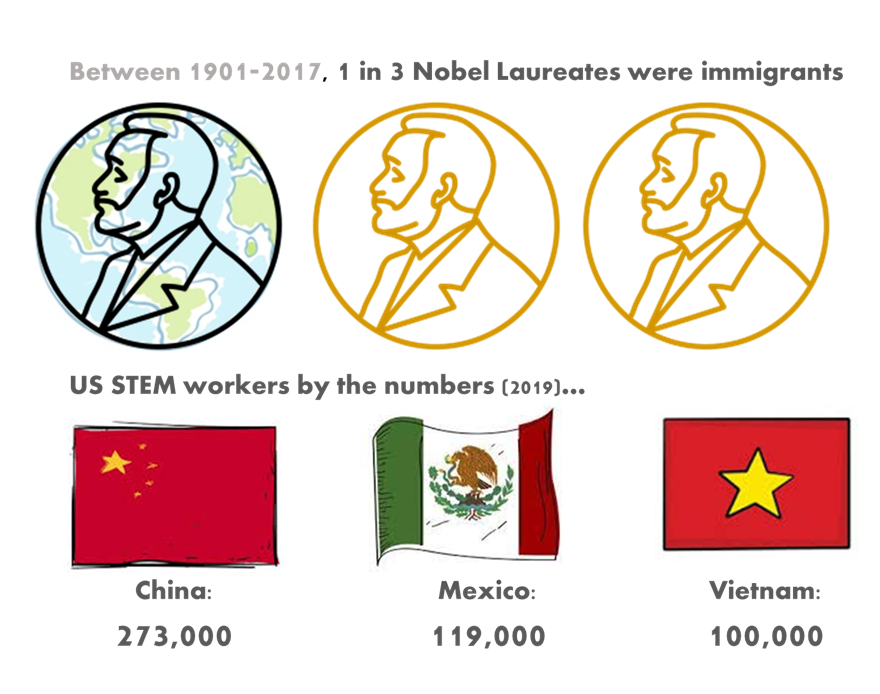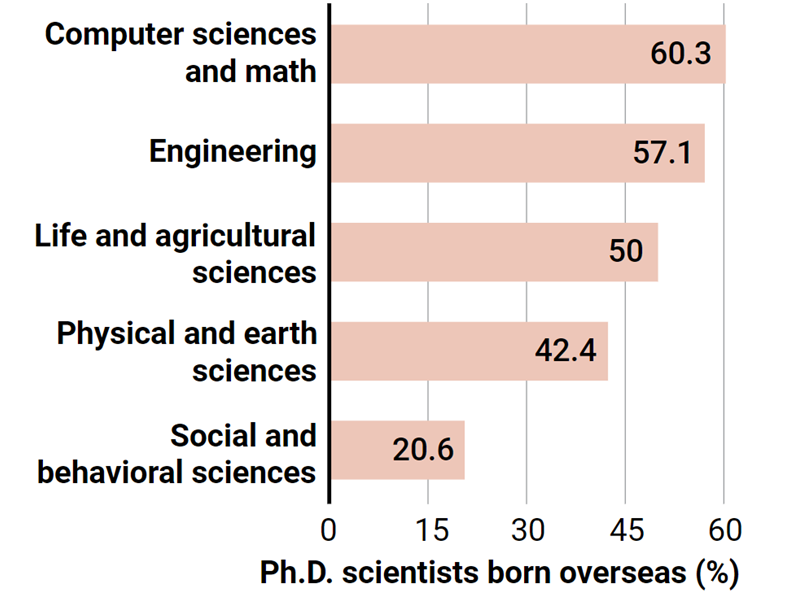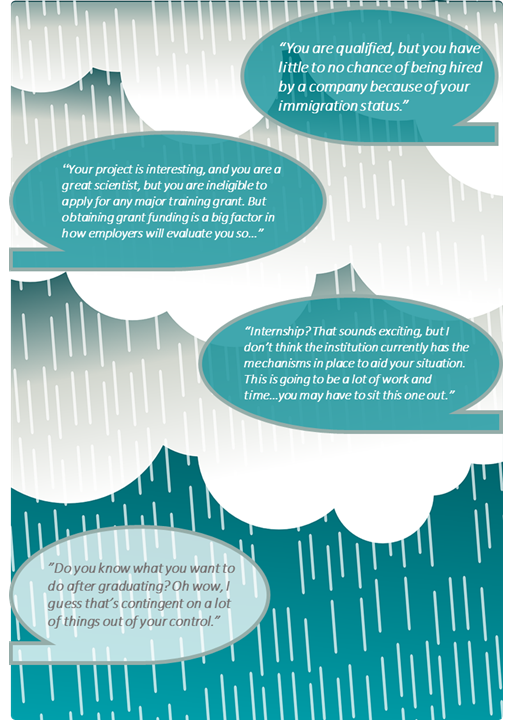“Kahoy mang babad sa tubig, kapag nadarang sa apoy sapilitang magdirikit.”

This Filipino proverb meaning “even a log soaked in water will burn if it is placed near a fire”, highlights the cultural importance of resilience and the idea that anything can be achieved if you place yourself in the correct conditions. I heard this message a lot growing up while watching Maalaala Mo Kaya (“Would you remember?” ), a drama teleserye, or telenovela, with my grandparents. The show televised real-life stories of Filipino hardship, persistence, and on the rare Friday edition, triumph! As my grandma and I sobbed together while watching episodes during our afternoon snack-time, merienda, we were reminded that in many cases, the ability to be surrounded by the “right conditions” was often out of one’s control. Since moving away from home to pursue my science training, it’s been several years since I’ve taken part in this afternoon tradition with my grandparents. Instead, I’ll find moments to call them and share my own tales of hardship, persistence, and the even rarer story of triumph in graduate school. In turn, they remind me to look for ways to kindle a fire, even though I cannot control the storm I find myself in.
The next US federal election is set for November 5, 2024. The deeply integrated connection between politics and science in the United States is a reality that society has become increasingly aware of in recent years. Sparks of scientific innovation have given us advances such as AI technology, greener fertilizers, and mRNA vaccines even in the midst of the downpour of climate change and a global pandemic. However, the policies that shape decisions around what science can be done and how it can be applied are being called into question. One year out, the country is faced with a looming government shutdown that has, to date, been prevented with a stopgap funding bill. The National Institutes of Health (NIH) logo that is present at the end of every PowerPoint presentation and at the bottom of every poster to acknowledge funding makes it apparent that the effects of a government shutdown would eventually ripple into research facilities beyond the NIH. Furthermore, a significant proportion of the scientists leading this groundbreaking work are immigrants. The ability of these individuals to participate in science in the United States is thus highly contingent on these policies.
The last US government shutdown lasted for 35 days, from December 22, 2018, through January 25, 2019. During this prolonged shut-down period, scientists deemed “non-essential”, such as those conducting research under the Smithsonian Institute, were unable to conduct field research, access their labs, or even open work emails until Congress reached a deal.. Within two weeks of the shutdown, the National Sciences Foundation (NSF) indefinitely suspended reviews of grant proposals and delayed panels scheduled to judge applications for postdoc fellowships. The National Oceanographic and Atmospheric Administration’s (NOAA) site with information on climate change was among the widely used public databases integral for research that shut down during suspended government operations. Disruptions in both funding and access to open-source data undermined progress in research, leaving early-career researchers and PhD trainees in a particularly vulnerable position. There were questions around where the money for experiments and student stipends would come from, and unfortunately, the tenure track clock does not bend for these shutdowns.
Just days away from the expiration of stopgap bill on November 17, we reflect on the projected impacts on scientific research a shutdown would have today:
- NSF would halt work for 76% of its workers once funding runs out
- NSF pays for approximately one-quarter of taxpayer-supported research in the US
- Researchers may continue to submit their funding applications, however, no new projects will be approved
- The US Department of Health and Human Services, which houses the NIH, would furlough about 42% of its staff by day 2 of a shutdown
- A longer-term shutdown would affect non-government scientists who rely on government funding, resulting in lost access to experimental facilities and delays in hiring decisions

At the root of the looming threat of a government shutdown is an unresolvable debate around government spending, including discretionary funding – under which allocations for scientific research falls. The Fiscal Responsibility Act of 2023, passed earlier this year would reduce discretionary spending by $3.5 trillion dollars over the next decade. If cuts were applied equally to scientific research, education, infrastructure, and other non-defense agencies, investments in science would be reduced by about $442 billion through 2033.
Furthermore, the NIH funding bill approved by the House Appropriations Committee sets out to cut the NIH budget by 6.2%, the National Institute of General Medical Sciences’ (NIGMS) budget by 2.6%, and the National Institute of Allergy and Infectious Diseases’ (NIAID) budget by 22.9%. Despite national and global recognition of the integral role that COVID-19 mRNA vaccine development played in safeguarding global public health in recent years, the 2024 paylines (funding cutoffs set for the grant year) for the NIAID, posted on October 23, show that successful R01 grant applications for new PIs will need to score in the top 12% to be funded, and only the top 8% of established PIs submitting grants will receive funding. If roughly 90% of R01 applications to the NIAID are not funded, research progress and the human capital that drives it will suffer.
Decreasing the federal dollars designated for research and development (R&D) activities impacts both academic and industry sectors. One study found that federal funding shock, defined as a decrease of 40% or more in grant funding from a program, resulted in a 15% reduction in publications from prior grant recipients and an 18% decrease in high-tech entrepreneurship. This study also found that it takes over 4 years for these sectors to recover from drastic funding cuts. Additionally, many studies have identified that earning a federal grant increases the likelihood of an applicant being awarded subsequent grants. One study found that every NIH dollar invested in R&D yields an additional $0.26 in non-federal sources of funding for awardees, including from non-profit and industry funders. In life sciences research funding specifically, another study found that each federal dollar invested generated an additional $0.33 of non-federal funding, which had a disproportionate effect on non-research-intensive institutions. Only about 3.7% of degree-granting institutions in the US hold an R1 designation, and the current grant awarding system favors a model in which these wealthy institutions have continuous funding so funding cuts will disproportionately impact R2 and R3 institutions. However, the research ranking system does not objectively evaluate the quality of research being conducted, and it is important to acknowledge that as of August 2023, no Historically Black College or University (HBCU) fits the bill for R1 status, further highlighting the inequities and injustices that these cuts exacerbate. Ultimately, less research performed as a result of funding cuts equates to fewer innovations and discoveries, fewer jobs, and less agility to react to emergencies like a global pandemic. It is also clear that specific demographics will be disproportionately impacted.
Beyond the concerns of reduced funding allocations hindering scientific research progress, the House NIH bill proposes other restrictive policies for research conduct. Some of these conditions include de-funding any research using fetal tissue from elective abortions, prohibiting funding for EcoHealth Alliance, which is a global environmental health nonprofit dedicated to protecting public health from disease emergence, barring the NIH from funding labs considered ‘adversaries’ (China, Cuba, Iran, North Korea, Russia, and Venezuela), blocking federal funds allocated to implement open access to research publications, and threatening support for gain-of-function (GOF) research. It seems that these policies were devised on the basis of political motivations as opposed to scientific merit. Funding for scientific research should be guided by scientific peer review. Instead, subjects of investigation and the funding allocated to these projects are being dictated by political expediency.

Despite how integrated science and politics are, the concerning reality is that a significant proportion of the researchers impacted by these policies do not have the opportunity to cast a ballot. Despite the contentions that have emerged in recent years around funding from the NIH and NSF, these agencies have historically been the envy of similar agencies around the world. Consequently, the US has been a magnet for talented international scientists for decades. From 1901 to 2017, 95 of America’s 289 science Nobel laureates across Chemistry, Physics, Physiology, or Medicine were immigrants.
Data from 2019 report that 23.1% of all STEM workers in the United States are immigrants, accounting for over 10.8 million skilled individuals. A significant number of these individuals have invested years of training at US institutions prior to entering the workforce, as in 2020, it was reported that across US universities 41% of undergraduate STEM students, and 63% of graduate STEM students were foreign-born. Furthermore, studies have found that foreign-born STEM workers have higher rates of educational attainment than their US-born counterparts, are more likely to obtain a patent or start their own business, and that their diverse perspectives and skillsets are complementary to those of their US-born co-workers. These findings highlight the contributions of foreign-born STEM workers to the US STEM system. Interestingly, these contributions actually create more opportunities for US-born STEM workers. Studies have found that a 10% increase in the share of foreign-born workers with advanced degrees working in STEM occupations boosted US employment by 0.03%. In other words, for every additional 100 foreign-born workers with an advanced STEM occupation, an additional 86 jobs are created for US workers. US higher education has long enjoyed the benefits of its reputation for welcoming foreign students and the fruits that have come from their efforts, however, the shift in rhetoric toward anti-immigrant sentiments in recent years is changing this.

Despite the fact that the US scientific enterprise is largely built by immigrants and their efforts, the annual cap on H1-B visas and other skilled talent visas hinders efforts to hire immigrant STEM professionals when no American workers are available. Visas have brought talented scientists to the US but there is no guaranteed path to permanent residency. The modus operandi to-date is for these individuals to obtain an H1-B work visa or leave the country. This process is lengthy, complicated, and costly, making it a major deterrent for employers which results in few opportunities for international graduates. Furthermore, the previous presidential administration proposed ending or suspending H1-B, H2-B, J, and L visa programs in 2020 – all mechanisms that allow students to work and graduates to stay in the US after extensive training. While no major developments on these drastic discussions have materialized, actions have since been taken to further restrict and/or complicate training opportunities, funding eligibility, and employment for international trainees. For example, policies introduced under the previous Administration to shorten the visa duration for Chinese graduate students planning to study certain subjects like aviation and robotics, are still in place today. Even private funding agencies such as the Howard Hughes Medical Institute (HHMI), which once supported the training and development of international trainees, has since pulled the plug on hallmark programs that provided funding opportunities for exceptional international trainees.

In addition to visa restrictions, international trainees must navigate many complex situations during periods of study and beyond when attempting to transition to employment. Speaking from personal experience, by the end of my PhD training, I will have spent nearly a decade in the United States obtaining research training. I started graduate school in the thick of the COVID-19 pandemic. My visa required that I be present in person for a certain number of course credits to justify my studies in the US as an international trainee. During that period, all instructional courses at UNC were online, which on paper, would not be compliant with the visa requirements outlined by the Administration. Rotations were the only option to obtain in-person credit hours to satisfy visa requirements, however, during a period when the world was without a vaccine was sticky and relied heavily on what individual labs were willing to agree to. Most faculty are unaware of the complexities international trainees face, but they benefit from the fact that trainees are usually around on weekends and holidays to keep projects moving. International trainees are ineligible for most predoctoral training grants, which can alter the impression many people have of their capabilities. In many cases, English is not their first language. Culture shock is real. Graduate and postdoc training is extremely stressful and often isolating, yet family and support systems are distant. These trainees are unable to pick up side gigs to supplement stipends due to visa conditions, and many are sending money back home to family while living paycheck to paycheck. Internships and employment opportunities often seem like a pipe dream and in the process of navigating everything, the most common response is blissful ignorance from peers and institutions. Many postdocs are particularly lengthy, as trainees rely on the sponsorship of their advisors. It is not necessarily intended dismissal or malice from individuals within the system that creates problems for these trainees. However, a severe lack of awareness across the system as a whole perpetuates issues that have life-changing impacts on these individuals. The system benefits from the efforts of these trainees but is unable to ensure a path forward for them and increasingly enacts policies that serve as roadblocks.
Ultimately, these policies impact what science can be done, who is allowed to conduct it, and who has a say in advising these policies. Many foreign trainees transplant from their home countries to provide the fruits of their labor in scientific innovation. However, current systems make it challenging for them to put solid roots down in the process. Additionally, cuts to R&D funding and restrictive policies around research conduct contribute to a desolate research environment. As scientists, we joke about how the work we do only reaches a tiny fraction of the population who reads our publications. However, it is moments like these when we realize just how interconnected our little worlds are with one another and with the larger systems that govern them. It is true that the ‘right conditions’ are not always within one’s control, but even the blazing fire of change begins with a match to kindle the fire – enacting a spark for change begins with a vote.
Peer Editor: Elizabeth Abrash